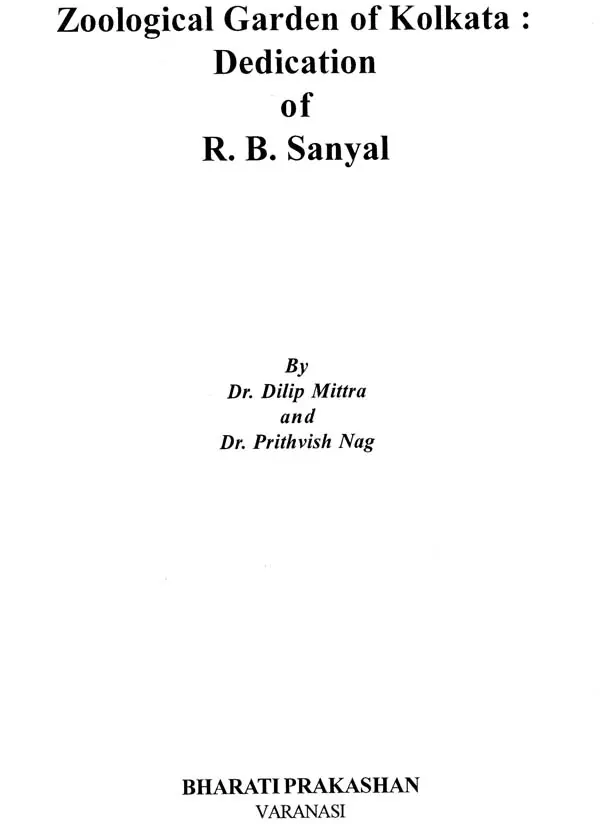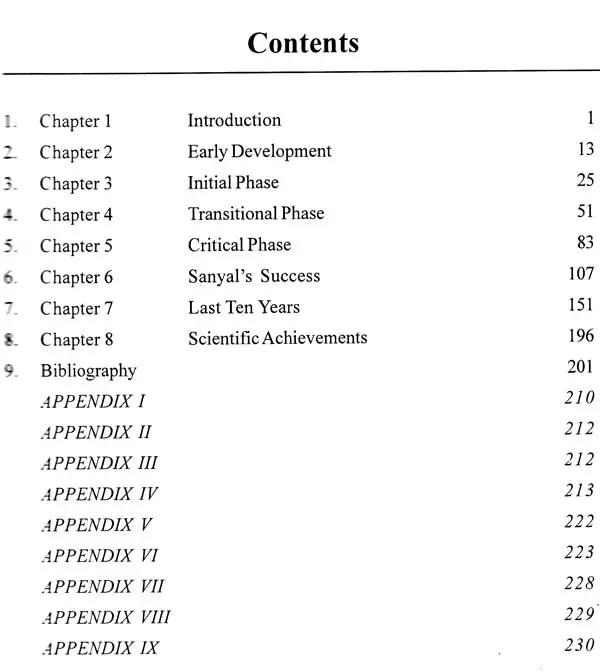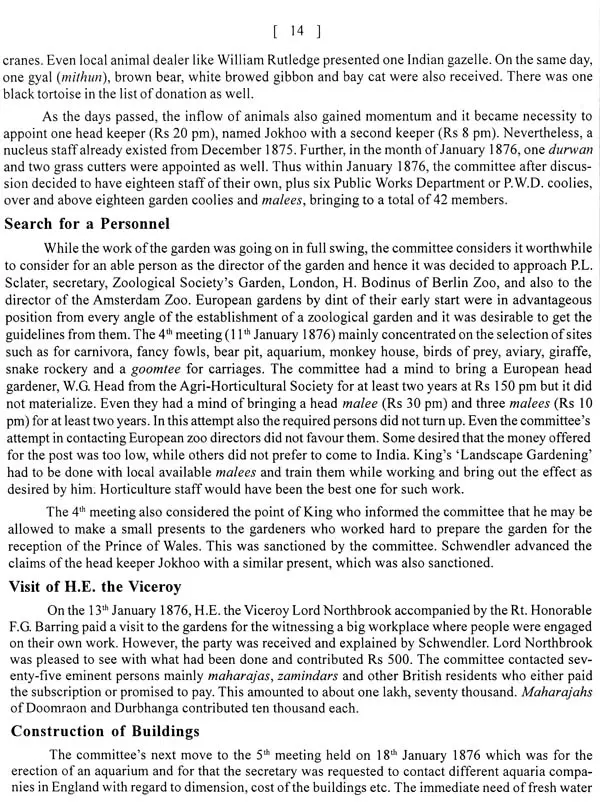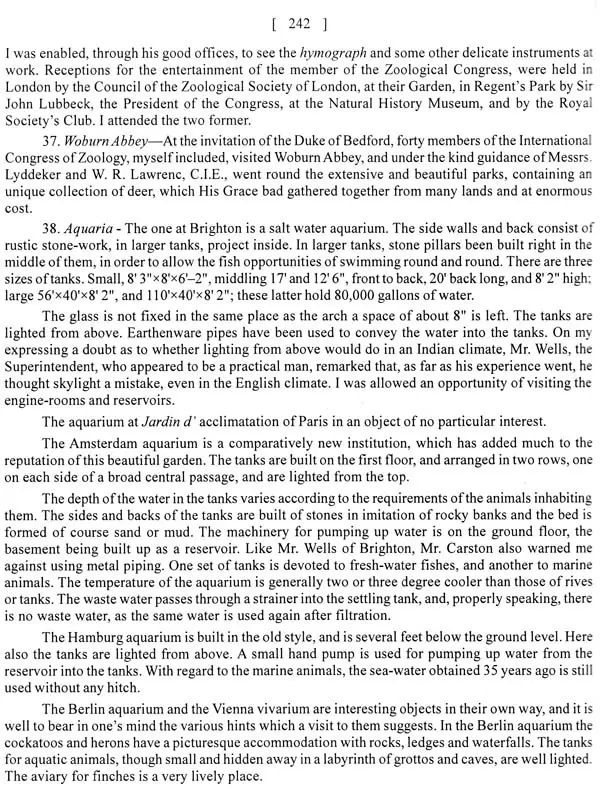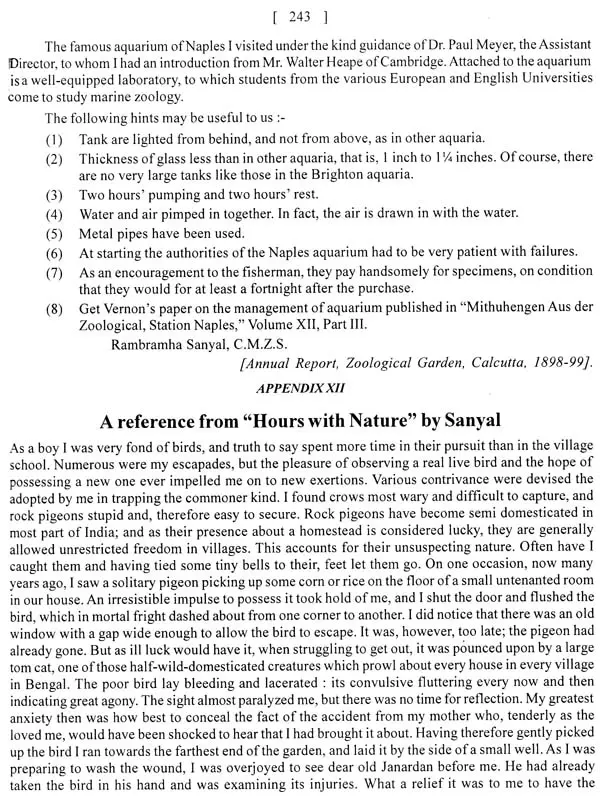
Zoological Garden of Kolkata Dedication of R. B. Sanyal
Book Specification
| Item Code: | UAI617 |
| Author: | Dilip Mehta and Prithvish Nag |
| Publisher: | Bharati Prakashan, Varanasi |
| Language: | English |
| Edition: | 2021 |
| ISBN: | 9789380550350 |
| Pages: | 259 |
| Cover: | HARDCOVER |
| Other Details | 10.00 X 7.50 inch |
| Weight | 640 gm |
Book Description
Dr Nag is a M.Sc. and Ph.D. from Banaras Hindu University. He has been Chairman of the ICA Commission on Population Cartography and full member of the IGU Commission on Population Geography. As UN Expert he was responsible for Census Mapping for Oman. He was Scientist/Engineer in Indian Space Research Organisation (ISRO), Director of the National Atlas & Thematic Mapping Organisation and Surveyor General of India. He has authored or edited over 70 books and 120 research papers. Currently he is the Vice Chancellor of the Mahatma Gandhi Kashi Vidhyapith, Varanasi.
He has authored or edited over 77 books and 135 research papers. Further he has been Vice-chancellor of Mahatma Gandhi Kashi Vidyapith, Varanasi, Uttar Pradesh Rajarshri Tandon Open University, Prayagraj; Sampurnanand Sanskrit Vishwavidyalaya, Varanasi and DDU Gorakhpur University. Till recently he was Visiting Professor/Faculty in the Indian Institute of Technology, Banaras Hindu University, Varanasi.
In India, towards the close of the 15 century European traders reached through the sea route. The 17 and 18 centuries witnessed a number of Jesuit missionaries entering India. Some of them no efforts in advancement of their knowledge in their respective sciences. But it is no denying spared no ct that so-called modern scientific investigations concerning India's natural features and treasures was taken up by the learned Europeans. They were either belonged to trading companies or were missionaries and explorers. In the early 17 century such naturalists came to India as physicians, administrative personnel or missionaries and were interested even in Indian botany.
By the close of 18 century the enthusiasm of botanical research reached Bengal from Malabar through Madras, now Chennai. The Royal Botanic Garden came into existence in 1787 at Shibpur on the bank of the River Hooghly. The garden thereafter became an important centre for botanical research headed by eminent persons. Just before the establishment of the garden in 1784, a learned association called The Asiatic Society' (later known as the Asiatic Society of Bengal) was established by the European investigators. They were engaged in antiquarian studies and diverse investigations of the natural history of India, and felt the need for exchanging experiences and expertise. William Jones, the founder-president of the Asiatic Society made it clear to all its members that the objective of such a society was to study the man and nature relationship within the geographical limits of Asia.
The enthusiastic members of the natural history found this society as a platform worthy of further research; and hence they went for the investigation of the rich and varied flora and fauna along with the geology and geography of India. In these scientific investigations, Europeans were at the forefront but Indians could also find their way with the introduction of English education. Nevertheless, the scientific and technical education took its root in India in the nineteenth century. The importance of this century is immense which saw intellectual, economic and social development of a new order. According to RC Majumdar, this development.
"...during the nineteenth century, it will appear that there was hardly any aspect of life and society which was not deeply affected by the western impact. The 19 century was a eat dividing line and these hundred years changed the face of India for more than did the preceding thousand years."
Among the other learned bodies, Asiatic Society went on playing an important role. The Indian Museum, the Botanic Garden along with the Agri-Horticultural Society all gave impetus for the study and investigation on scientific lines. The zoological studies started by Francis Hamilton Buchanan as early as 1823, followed by Brian Hodgson in 1824 and H. Falconer in 1830. John McClelland was the first editor of Calcutta Journal of Natural History which had its first publication in 1841.
“150, 000 rupees should be raised in 500 shares of 250 rupees each, leaving it open to persons who do not wish to become share holders to subscribe such sums as they think proper".
The Proposal McClelland, after citing examples from England regarding expense of collecting wild animals maintaining expensive buildings etc, finally said, "in Calcutta the expense of a zoological garden would be comparatively small as trees would afford nearly the whole of the requisite shelter". In concluding remarks he said,
"A proposal so well calculated to open a place of rational recreation and promote the interest of the city of Calcutta, is not likely to be allowed to fall to the ground for want of funds and from the nature of the object, it would be necessary to have a sufficient amount in hand to begin with, as, the principle outlay would be at the commencement for the preparation of the grounds, as well as for the purchase and collection of interest".
Although McClelland’s proposal was well thought of and praiseworthy but did not get with any response at that time until an anonymous writer discussed about the establishment of a zoological garden as a sister institution to the Indian Museum.
Book's Contents and Sample Pages
